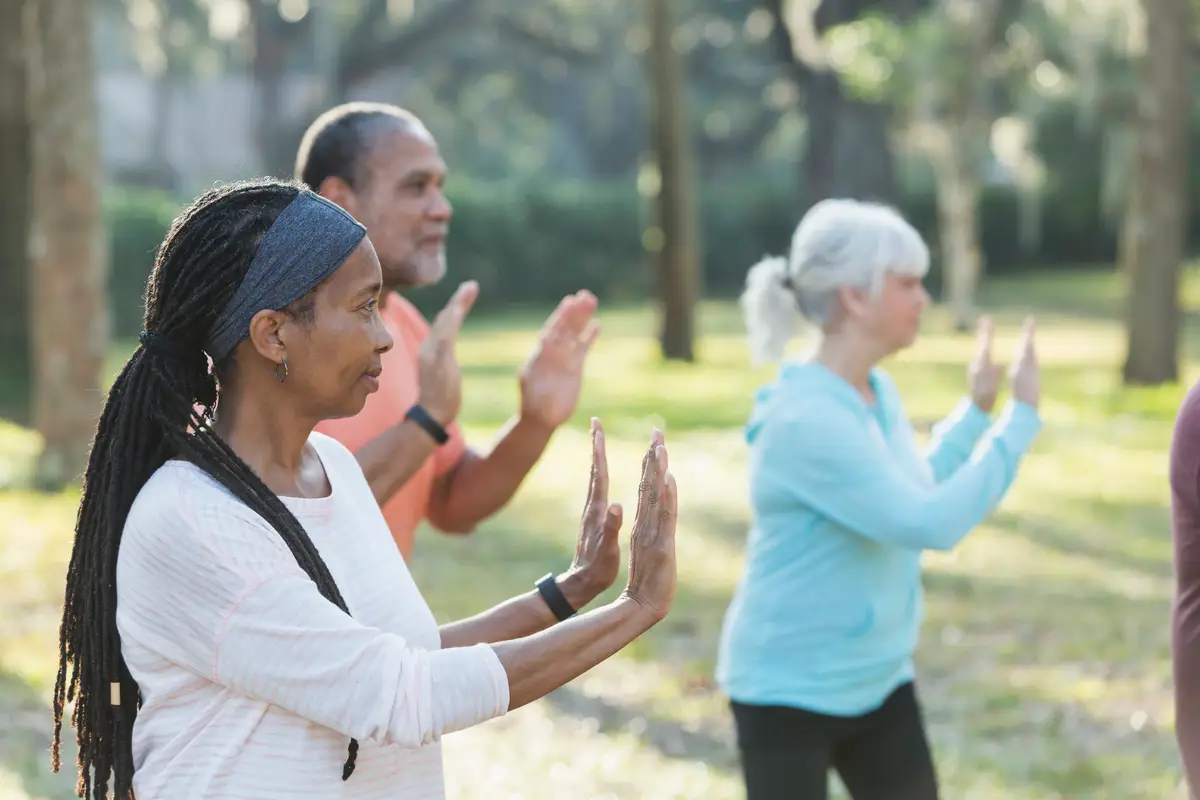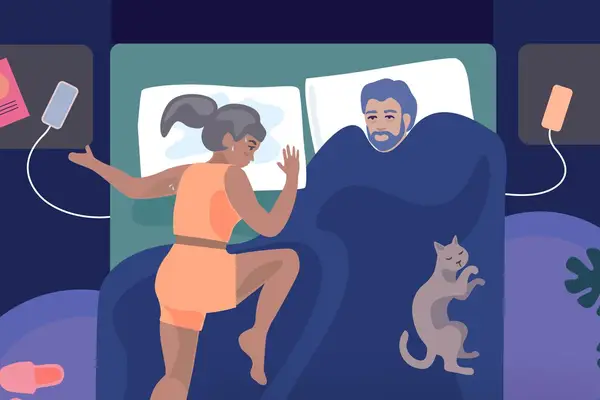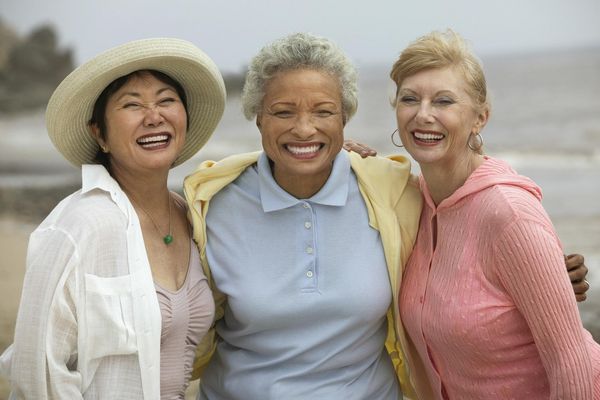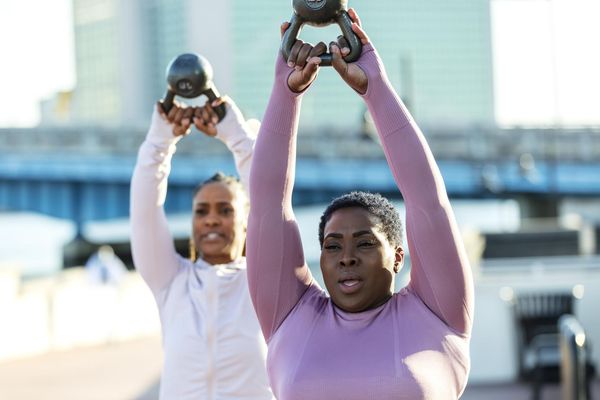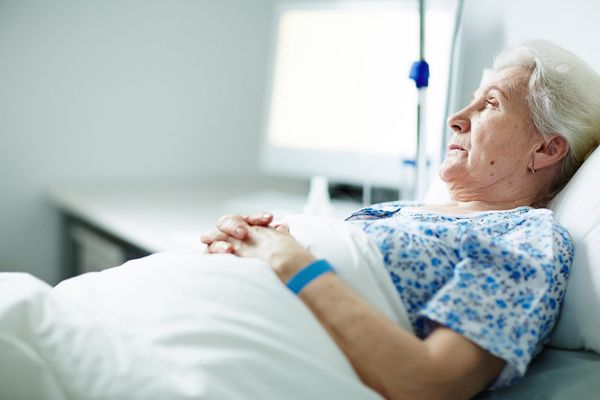Nearly every week for four years, I've joined an eclectic group of women for a belly dancing class. A lot of the younger women, like me, are there to feel more comfortable in their bodies or for general physical fitness. But there are a few older women who are there to improve their balance. They're afraid of falling and breaking something.
It turns out, they have good reason to worry. According to the Centers for Disease Control and Prevention (CDC), falls are the top injury-related cause of death for adults age 65 and older and the most common cause of traumatic brain injuries. Every year, one out of every four older people falls and 3,000,000 older people are treated in emergency rooms for falls.
What's more, the CDC reports that, every year, more than 300,000 people age 65 and older are hospitalized for hip fractures, and 95% of hip fractures are caused by falling. Women account for 75% of all hip fractures — because they are at a greater risk than men for falling and many women have osteoporosis, which weakens the bones.
Why falls happen
I wanted to understand why older people fall and why women are more prone to falling than men, so I reached out to some experts.
In an email exchange, Dr. Christina Chen , a geriatrician at the Mayo Clinic and member of HealthyWomen's Women's Health Advisory Council, told me that, in general, falling is a multifactorial issue — it's not usually related to one single cause and may be different in each person.
“Older adults are more vulnerable to external insults that may impact their balance and ability to react to a falling scenario," Chen wrote.
Chen explained that, as people age, their muscle strength changes and they can develop a disorder called sarcopenia, a skeletal muscle disorder that is associated with increased falls. Other disorders such as osteoarthritis can lead to physical weakness. She added that heart failure, pulmonary disease, diabetes, vision or hearing impairment and medication side effects are also risk factors.
“[The higher incidence of women falling] may be related to an increase in variability of gait, particularly during multi-tasking scenarios," Chen wrote.
Often, balance issues are related to a person's gait, which is simply the way they walk. Conditions that come with aging, such as arthritis, strokes or an inner ear disorder, or even wearing the wrong shoes can cause someone to develop a gait disorder, which can affect their balance and lead to falls.
A study published in 2016 found women have a 50% greater risk of falling than men, and the increased risk was associated with gait variations during “dual-task activities" in women. Another study noted that “Reduced muscle strength is a risk factor for falls, and aging and female sex are associated with reduced muscle mass."
Ellen Flaherty, Ph.D., MSN, APRN, director of the Dartmouth Centers for Health & Aging, explained in an email that “Some factors such as frailty and incontinence are associated with falls in women more than men and women are more likely to trip than men,” Flaherty wrote.
A vicious cycle
Chen told me that the most devastating health complications from falls are injuries. The resulting bone fractures, internal bleeding and pain can lead to long hospital and rehabilitation center stays.
“Many older adults develop an intense fear of falling afterwards, which further perpetuates a cycle of immobility, fear of ambulation, and adds to the risk of future falls,” Chen wrote.
Fortunately, there are steps people can take to reduce their risk of falling. Preserving muscle strength, keeping joints strong and taking care of your general health are key.
“Stay active, and get active if you are not,” Chen wrote. “It is always better to be proactive than reactive, and start exercising as early as you can. Adding balance exercises to your routine fitness plan can be done at any time, preferably sooner than later.”
Chen advised looking for ways to improve your balance, staying in touch with your primary care provider, making sure vision and hearing impairment issues are addressed and remaining aware of your environment.
“Home hazards such as loose rugs, slippery tiles in the bathroom, dim living spaces, and crowded areas add to fall risk,” Chen wrote. “If you have general gait and balance problems, sometimes using the appropriate assistive devices may be helpful in preserving your ambulation potential.”
Creative solutions
It turns out, those older women in my class are on to something. According to a 2019 trial of older adults, dance classes helped improve balance and fitness levels of the participants.
Chen concurred, but advised those at greater fall risk to approach advanced dance moves (such as spins) with caution.
For a gentler way to improve balance, she suggested the ancient Chinese practice of tai chi, which involves moving the body in a series of slow stretches and movements.
“Tai Chi is a great activity for general improvement of balance, and reducing fall risks,” Chen wrote.
A 2018 study published in the Journal of Exercise Rehabilitation found that tai chi can help older adults improve their balance and muscle strength and even reduce their fear of falling.
Whether it’s dance, tai chi or another activity, both Chen and Flaherty said it’s important to make exercise part of your routine.
“Participating in regular strengthening and balance training exercises is one of the most important things someone can do to reduce their fall risk,” Flaherty wrote. “We must include resistance (or strength training) exercises to the point our muscles feel some level of fatigue by the end of the workout to have an effect of strengthening the muscles.”
She added that specific balance exercises need to be incorporated to reduce falls.
“Bottom line is to do your best to stay active within your limitations and don’t let a fall cause you to regress,” Chen wrote. “Preservation of function is the key to independence.”
Resources:
National Council on Aging, Evidence-Based Falls Prevention Programs
- Clinically Speaking: Questions to Ask Your Healthcare Provider (HCP) About Osteoporosis ›
- 7 Ways to Prevent Bone Loss ›
- 7 Top Tips for Healthy Aging ›
- How To Avoid Falls in Your Home - HealthyWomen ›
- Injury-Proof Yourself for Effective Exercise - HealthyWomen ›

